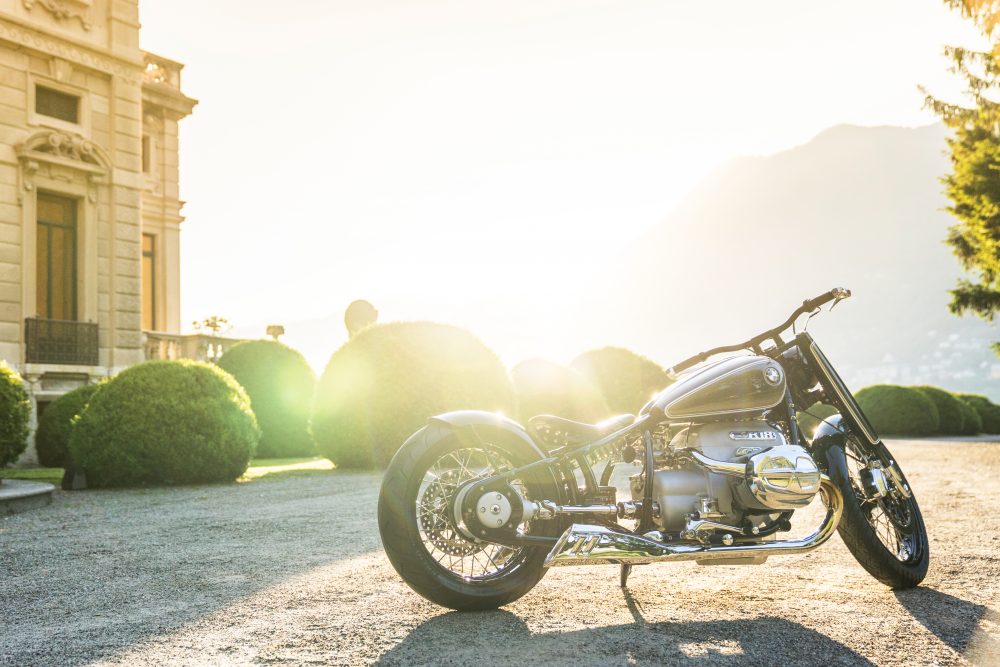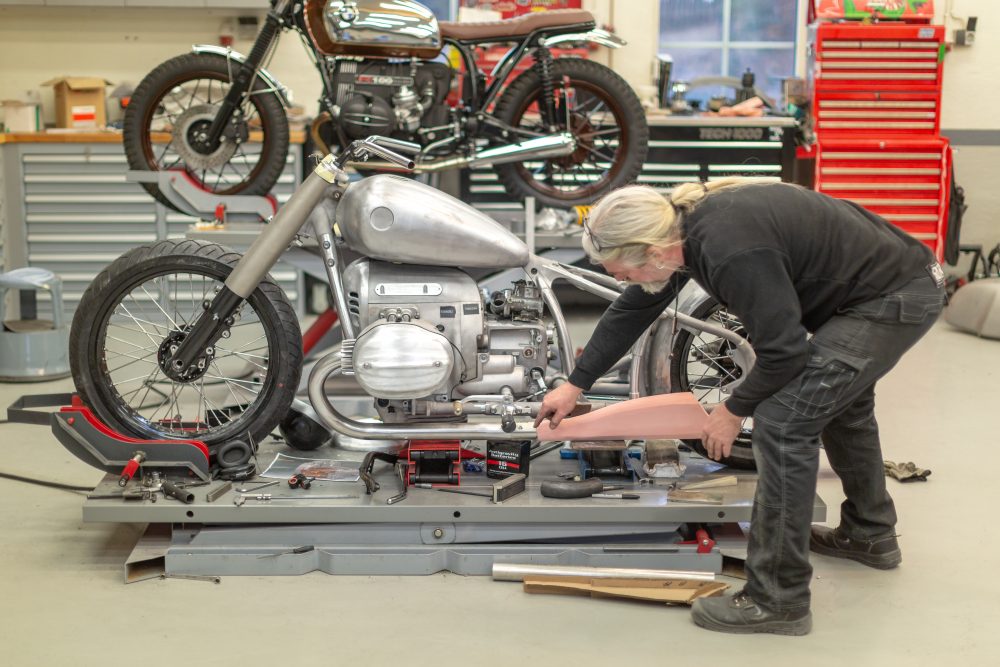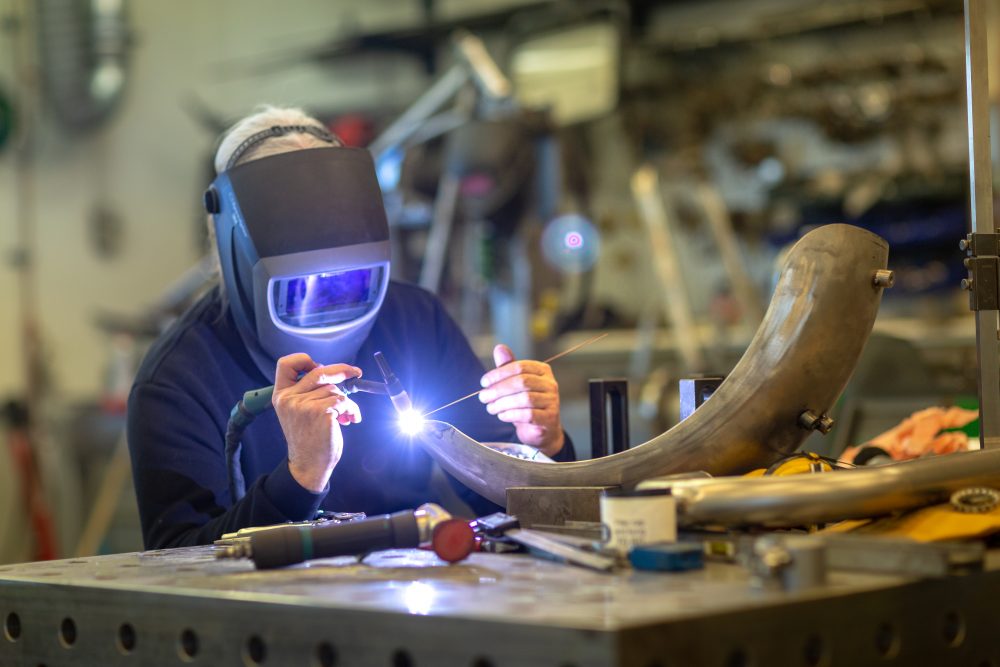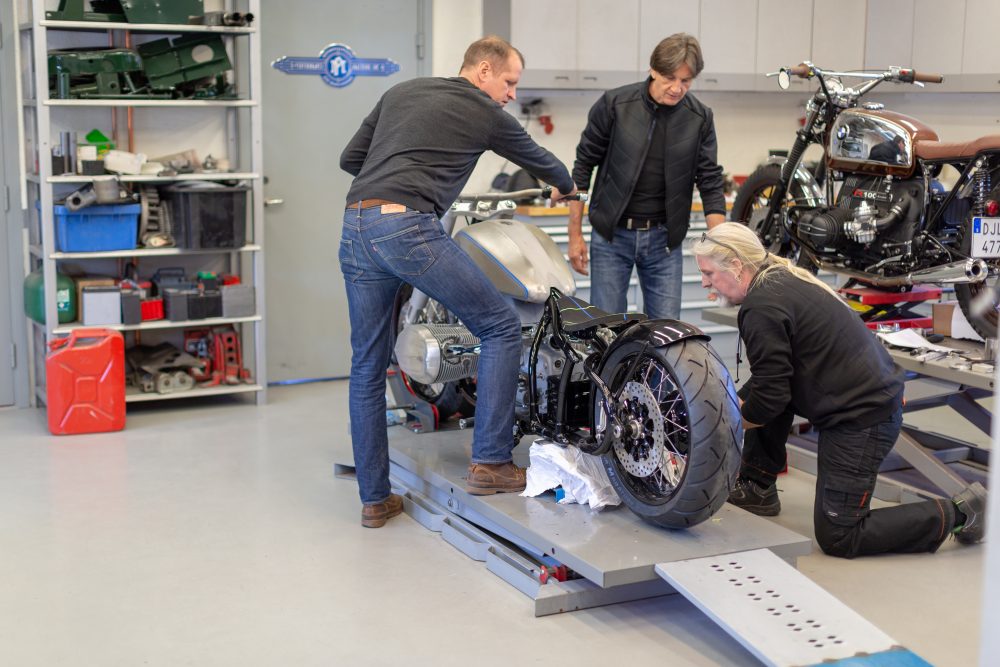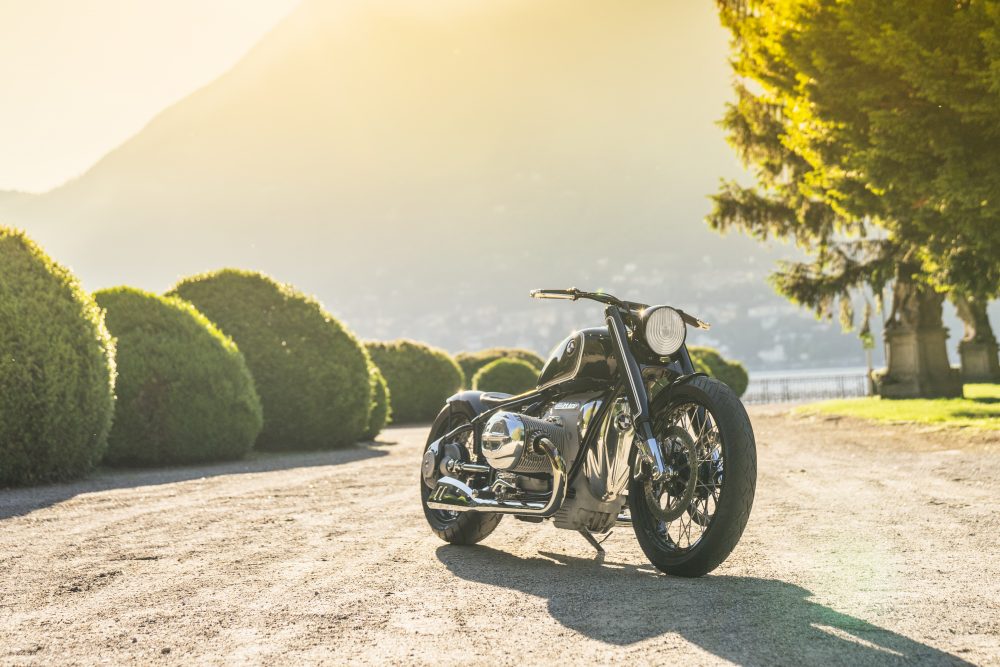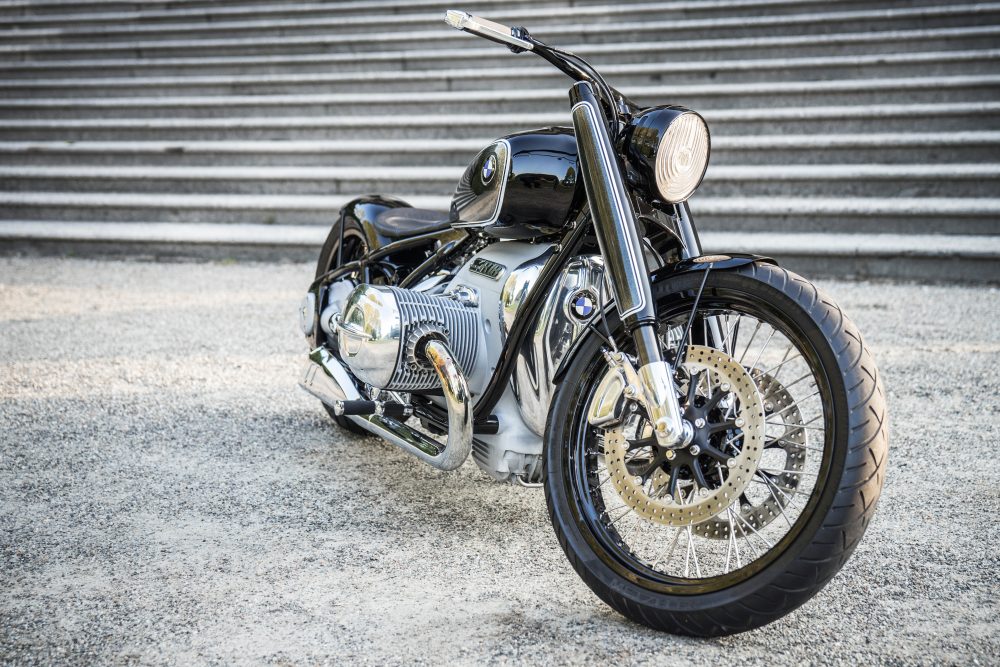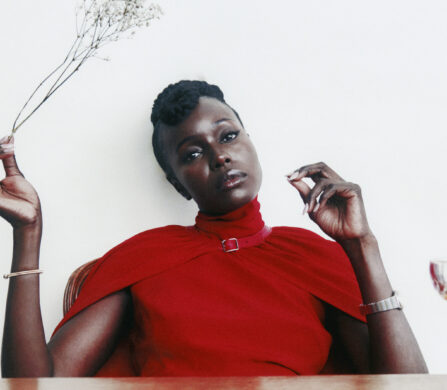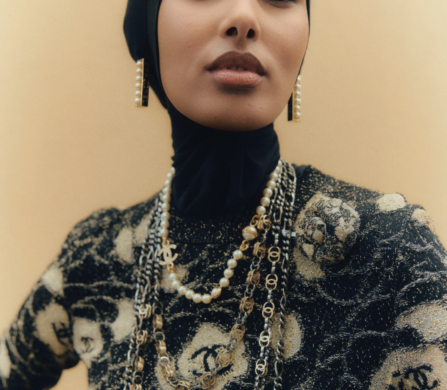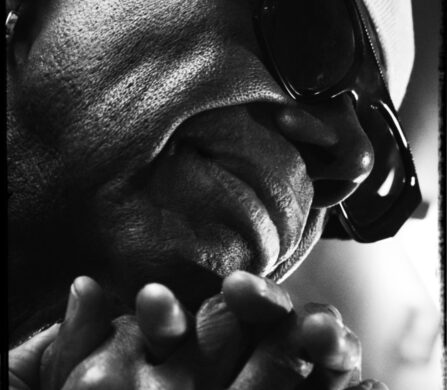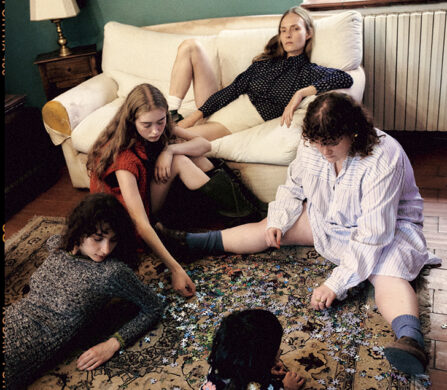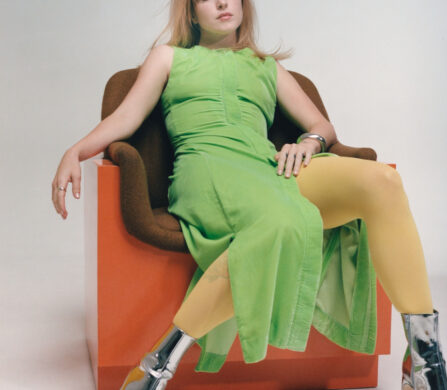BMW’s newest concept bike, the R18, is a head-turner. Its construction appears simple — the pieces making up the R18’s sleek body, from its boxer engine and cradle frame to its drop-shaped fuel tank, are unmistakably BMW — but these elements are composed with an elegance and simplicity BMW hasn’t seen in decades. To put it simply, it’s stripped down, it’s balanced, and it’s sexy.
Designer Edgar Heinrich is one of the masterminds behind this new bike, which blends the over 90-year tradition of BMW motorcycles with modern performance and technology. Heinrich entered the industry over thirty years ago, beginning his career at BMW Motorrad in 1986. Since then, he spent several working in India at Bajaj Auto before eventually returning to BMW, this time as the director of design.
For Heinrich, the R18 is true innovation. The bike may not be as flashy or performance-focused as some of BMW Motorrad’s other offerings, but in Heinrich’s mind, it’s all the better for it. Schön! interviewed Heinrich at the 2019 Concorso d’Eleganza Villa d’Este to hear his thoughts on the R18 and the state of the motorcycle industry today.
BMW has a history of motorcycle design going back over 90 years. How do you balance that tradition and those classic designs with newer work?
We always say, we have a huge history – and we’ve never really capitalised [on] it, I have to say. This changed with the Nine T, and I think this is very, very valuable. In the earlier days, BMW was all about innovation, technology, quality, and these things, but the last years, the market’s changed a bit. Everyone is sort of fed up with this super high technology thing, super performance, superpower – you need all these little black boxes to control your performance.
So we see it this way: there are these two big chunks of people, the ones who are performance guys who still want to have this [technology] – and they should have it, that’s all fine – but there are the other guys, who are more into this emotional… the [performance bikes] are also emotional, but it’s a different emotion, yeah? Performance-driven emotion. This is more about an emotional, easy-going, coolness, kind of stylish thing. This is where we find there is a growing need…
A motorbike is a very emotional thing. It’s like a big accessory. It’s probably a little like fashion, you know? You don’t really need it, but it’s nice to have, and you make a statement to the outside world with it, because your mindset, your attitude can be perceived by the environment, like the way you dress.
It’s a status symbol as well as a personalisation of yourself.
It’s a status symbol, but it’s also a personal attitude-showing-off. If you have a GS Adventure or a race bike or a bike like the concept R18? That’s a very different message to the outer world. This is where our history comes back. We said we want to use it – we have a huge history that other companies would kill for, and we want to use it. It’s so strong. What we did is, basically, we had a closed loop in the old bikes, condensed the DNA of it, and translated it into modern times. The basic idea is that we wanted to tell our own story. We didn’t want to explain what we were doing – we wanted to tell a story, and make it very easy to understand that this is a BMW. Everybody knows it’s a BMW. You don’t have to explain it.
And how do the people know who don’t ride bikes? How do you get them? Is there a motivating ethos or philosophy, and how would you explain it to people like myself who do not ride bikes?
It’s a good question because I often hear this sentence, “You guys have great bikes, you have good performing bikes, but I am not a good rider.” That’s very typical. You hear that from re-entries, or from young guys. The problem is, actually what they’re saying is they are afraid of riding 160 horsepowers. Because if you go into the Dolomites now and somebody’s passing you and you ride a GS, you have a problem, because everybody knows the GS is a superb bike and you don’t ride very good. It’s your problem, you’re not a good rider – this is what people say. And this is actually the secret why people go into… let’s say, Harley Davidsons – these emotional cruiser bikes, or 90s or vintage bikes – because in this segment, you don’t have to be a good rider. You go on the bike and you can just cruise around, and even if you cannot ride a bike, it doesn’t matter. This is very important for people who want to be part of this “lifestyle” thing, but you don’t necessarily have to be a super good rider. It’s a very good thing, I think.
So I could ride those concept things.
Everybody could ride. It’s a low seat, it’s easy-going, it’s not challenging you.
The question when I saw the bike – I was impressed by it, but in fashion what we do is upgrade, renew old designs and old trends all the time, lacking the actual innovation of creating new trends or making groundbreaking new designs. I see this in architecture, for example. There is a lot of, this is ‘of the era.’ Is it not also a want, from a designer’s perspective, to create something groundbreaking other than going back to what is done and upgrading? Because in fashion, when you look back, we now wear what we wore in the 90s. It always goes in the decades.
Your point is valid. But first, we are doing this. We have a super huge portfolio, and we do very innovative things. Yes, we also do this kind of thing. We dig into our history and reinvent the old history. That’s the one point. The other point is, a bike like this might look like it’s a redesign of an old bike, but actually, it is not. It’s one of the most difficult things nowadays to do a bike like this, and this is why there are so few out there. To do a bike, a modern bike which has a look of an old bike, is very, very difficult. To make a modern naked bike in contemporary times is probably the most difficult thing you can do. Because, for all of these homologation things, for all of this wiring, all of these black boxes – to hide away all of this stuff is mega problematic. If you have a modern bike with all of the bike leading around, it’s relatively easy to make a nice design. To make a clean design like this, with all the modern functionalities, with all of the homologation things on, it’s probably in motorbike design the hardest thing you can do. In this way it’s super innovative.
What are the biggest challenges facing motorcycling right now? Safety? As you said before, it’s built on emotion – it’s an accessory you don’t need, but you want.
The challenges are definitely the safety discussions, on the one hand. This is why we’re doing a lot of things to increase safety, but on the other hand, increasing safety is also a thing that has to be done in a modest way, because you don’t want to ride along with a vest or all this armour. Visualising safety can make the contrary – if you have to wear all this, it tells me, Oh, this is super dangerous. I better not do it. So that’s not the right message. Of course, you can apply a lot of electronics stuff to make things safer. We’re working on all of this safe riding gear. Safety is an issue.
Also, homologation things are an issue. You cannot predict what will come in the next five or ten years. We have countries where bikes are abolished from inner cities, for example. There are threats, but on the other side, there are opportunities for all of these congested inner cities. A bike can help a lot with this.
Of course, there are more and more electric bikes. If we think about the future of cars, autonomous driving cars, I think the bike is kind of an opposite idea, because it makes individual transport interesting. It’s a very emotional way of transport, which is a little bit lacking if we’re talking about autonomous driving cars.
It gives you more freedom, as well. You don’t have to find a car park. Can you describe the mentality of the ideal BMW rider?
I don’t if there is “the” BMW rider.
My mum rides one.
[laughs] We have lots of different kinds. There are typical riders in different segments. I think about the Boxer RT rider, that’s usually elderly people – but they are self-confident and kind of untouchable. Then, of course, we have Double R riders – they’re pretty young guys, more or less. Nine T riders getting very atypical – lots of very young to very old, lifestyle-ish. You have to more go into the segment to define the rider.
When you start a new bike or a new concept, are you trying to find a new rider or a new market where you think, like, okay, there are some weaknesses we face in the American market, some other manufacturers are stronger. Or do you think, alright, I want to do something that is us and me?
Of course, we do this. We do market research. You look at the market shares, the typical customers – that’s what every company is doing. You find segments where you’re pretty strong and you find segments where there’s a weakness. We have a long history, and we always try to attack this American market, because there’s a big cruiser market – a big chunk is cruisers – and we don’t have the right bike. There was some investigation in these markets and how we could tackle [it], and at the end of the day, we had the final verdict that, if we do this, we have to do it our way. We want to do our story, our authentic story. We don’t want to copy anybody. Nevertheless, you have to play along with the applied rules, but you have to do it in your own way.
You’ve spoken in the past about making bikes appeal to younger riders. Is this still a desire of yours, and what efforts have you made to do this?
This is the general problem of the industry. Riders are overall getting a bit older. This has changed a little bit in the last few years – younger guys are coming back, and this is also due to bikes like this – this kind of Nine T thing. That attracts younger people again. It has a lot to do with this customising, this individualisation thing. Lots of people are buying these old bikes – cheap bikes – and turning them into something cool. That’s cool again. That’s nice again. And it’s not necessarily combined with loads of money.
So you start from the idea of the design, of how you want the bike to look? Or do you have the technology and then design around it?
Again, this is depending on what segment you’re in. If you’re talking about performance bikes, performance counts. It’s not important how you can modify it or whatever. If you talk about an emotional bike, like the R18 or the Nine T, it’s more the canvas. You’re able to express your own idea about a bike because you can tinker around, you can change it, you can customise it, you can individualise it – you can make it your own picture. It’s more like a canvas upon which you can make your own picture.
A performance bike is a different thing. We really try – our portfolio is very wide – and we really do treat segments in a different way. This is really key and important.
Do you see any gaps in the current market that need to be filled, where you are feeling, okay, that’s where we step in?
There are always gaps. There are designers where every day they have a new idea, which is our job (laughs).
That’s the beauty of it.
There are always some cool ideas. This is, I understand, our job, being visionary and challenging the production guys every day. Production is the other side – they want to have the same thing every day, no interference.
Why change when it works? [laughs]
We invent a new thing every day, and this is kind of the tension, which is a positive tension. We always see segments or subsegments, and that’s easy. You can use your photoshop and put things together and create something new – wow, that’s cool! You should do this! But of course, it’s not so easy. If you do it you have to apply a lot of money. But this is the cool thing the guys do at home.
They just build in their garage. My last question was “tell us about the R18,” but I’ve already heard much about it in the panel talk. It’s a great story that really grabbed me. But about the R18 – was it made to get a cruiser to aim at a new market but also go back to heritage? Was that the basic idea for the concept?
For us, this thing is new, and super interesting. It also expands our portfolio again in a very emotional corner where we haven’t been before. This is probably the super interesting thing.
I’ve just written “want” on it. “I want.”
This is why it’s super interesting. Nine T was already doing this, but this is really pushing the envelope even beyond.
The simplicity – it’s sexy.
I call it the power of simplicity. All I have to say is, nowadays, it’s very easy to make things complicated. But like what I said before, it’s more complicated to keep things simple, and I think everything is complicated. You see it – politics and everywhere – people are looking for simple answers, which in politics doesn’t work, but here it does (laughs).
Yeah, it’s the beauty of finding that simplicity is back. But I see that the individualism is actually what is back because we’ve been powered by “musts.” It’s the same in fashion – people want old sneakers, and so on.
They were simple. This is also, formally talking about the GS, this integrated design. Simplicity is, when you look semantically if look at the thing – there’s the tank. There’s the engine under the frame. There’s the gearbox. It’s simple. And this is something people love now. The mechanics are understandable, the elements are easy to understand – it’s all about simplicity.
How, then, do you individualise a machine like this? Because it’s so stripped back that it doesn’t need anything extra.
The beauty of simplicity is that, just by adding something, you make it your own. If you have this integrated thing, you cannot take a part out. You ruin it. If you have simple things, you can add something.
Discover more about the R18 concept on BMW’s official site.
Schön! Magazine is now available in print at Amazon,
as ebook download + on any mobile device












